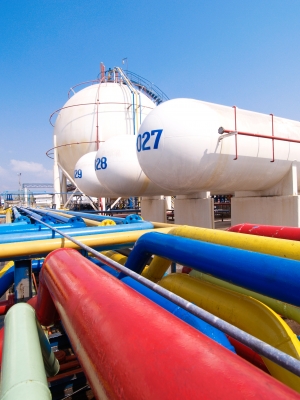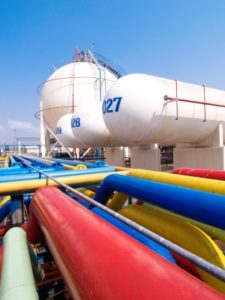Across the United States, approximately 2.5 million miles of pipeline move roughly 55 billion cubic feet of natural gas every day. Anyone who has ever had a leaky pipe in their home knows the damage that can be caused when a pipe fails; even so, outdated and improperly maintained natural gas pipelines are a larger problem than most people realize. Fortunately, government, industry, and other stakeholders are starting to collaborate to solve this costly and potentially dangerous challenge.
Earlier this year, the U.S. Department of Transportation’s Inspector General issued a report stating that the federal Pipeline and Hazardous Materials Safety Administration (PHMSA) is not doing enough to ensure the safety of intrastate gas pipelines. The Inspector General’s report detailing insufficient federal oversight and enforcement was released more than 3 years after a September 2010 natural gas pipeline explosion in San Bruno, California destroyed 38 homes, killing 8 people and injuring more than 50 others. According to the National Transportation Safety Board Pipeline Accident Report, the rupture and explosion was the result of a seam weld defect present on a Pacific Gas & Electric Co. (PG&E) transmission pipeline since its installation in 1956.
There’s definitely a need to repair and replace aging gas lines. While severe events such as the San Bruno explosion are rare, the condition of the failed PG&E line isn’t particularly unusual. More than 20% of the nation’s gas distribution pipelines are over 50 years old or composed of materials such as cast iron or bare steel that are more susceptible to failure than newer pipelines made with more resilient materials.
While adequate oversight and enforcement may continue to be a challenge, other methods are being proposed to address pipeline safety and efficiency. On July 29, 2014, the White House and the U.S. Department of Energy (DOE) held a Capstone Methane Stakeholder Roundtable and announced a series of actions, partnerships, and commitments to help modernize the nation’s natural gas transmission and distribution systems and reduce methane emissions. The capstone event was the culmination of four previous roundtables at which leaders from the energy industry, environmental organizations, state regulators, consumer groups, academia, and manufacturing and labor unions were asked to provide the Obama Administration with their perspectives on opportunities to modernize natural gas infrastructure and reduce methane emissions. Some of DOE’s resulting initiatives include the following:
- Set up manufacturing and pipeline efficiency research, development, and demonstration programs to improve efficiency in natural gas transport systems and reduce the number of leaks.
- Provide loan guarantees for new technologies that reduce methane emissions from gas transmission and distribution systems.
- Work with the National Association of Regulatory Utility Commissioners to increase investments in the modernization and repair of natural gas distribution networks.
A different collaborative effort is tackling the problem from a different angle. Google has found an ingenious way to use its fleet of Google Street View cars, partnering with the Environmental Defense Fund and researchers at Colorado State University, to map natural gas leaks. The cars are fitted with special devices that can analyze the air to detect and measure contaminants such as methane. The new technology could be used to map other toxic chemicals that might not be as easily recorded and analyzed with current technology.
Google and its partners have used the new system to map gas leaks in Boston, Staten Island, and Indianapolis. The maps can be used to spot leaks, prioritize fixes, and make systems more efficient by identifying where infrastructure needs to be updated. For example, leaks were far more common Boston and Staten Island where many pipes are more than 50 years old and made of materials subject to corrosion. Although the public is more aware of fracking and its issues with methane leaks (known as flaring), officials hope the new maps will raise awareness of other natural gas issues.
Natural gas leaks are not only damaging to the environment—they are expensive. Last year more than $190 million worth of natural gas leaked, according to the EPA’s Inspector General. It will be years before all of the leaks can be addressed, but the government sees this monumental task as a way to improve the environment and save money that’s simply floating away.







Recent Comments